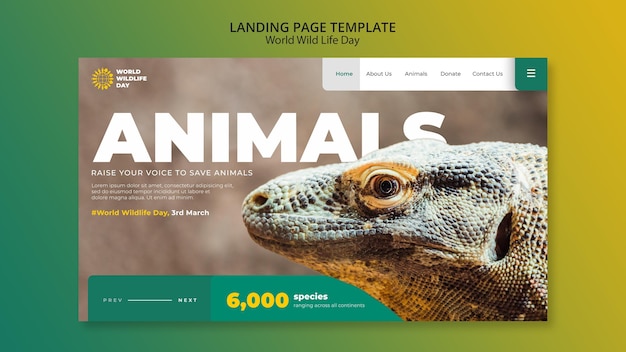

Did you know that reptiles are some of the oldest creatures on Earth?
Reptiles have scaly skin that helps protect them from predators and retain moisture.
The largest reptile in the world is the saltwater crocodile, which can grow up to 23 feet long.
Contrary to popular belief, not all reptiles lay eggs. Some, like the boa constrictor, give birth to live young.
Reptiles are ectothermic, which means they rely on external sources of heat to regulate their body temperature.
The smallest reptile in the world is the leaf chameleon, which measures only around 0.6 inches.
Snakes are reptiles, but not all reptiles are snakes.
Reptiles have a third eyelid called a nictitating membrane, which helps protect their eyes underwater.
Throughout history, many cultures have associated reptiles with symbols of power, wisdom, and transformation.
Some reptiles, like geckos, can regrow their tails if they lose them to a predator.
The green anaconda is the heaviest snake in the world, with females weighing up to 550 pounds.
Most reptiles are carnivorous, feeding on insects, small mammals, birds, and even other reptiles.
Reptiles are cold-blooded, meaning their internal body temperature matches their environment.
Giant tortoises can live for more than 100 years, making them some of the longest-living reptiles.
The reticulated python is the longest snake in the world, with some individuals reaching lengths of over 30 feet.
Many reptiles, such as turtles, have shells that act as a protective armor.
Some lizards can change the color of their skin to blend in with their surroundings.
Reptiles have unique adaptations that allow them to survive in various habitats, from deserts to rainforests.
The Komodo dragon is the largest living lizard species, growing up to 10 feet long.
Reptiles have existed on Earth for over 300 million years, outliving the dinosaurs.
Many reptiles, including alligators and crocodiles, have a lifespan of 30-50 years.
Some species of turtles can hold their breath underwater for up to five hours.
Reptiles have a slower metabolism than mammals and can go for extended periods without eating.
The frilled neck lizard has a unique defense mechanism where it extends a colorful frill around its neck to intimidate enemies.
The horned lizard can shoot blood from its eyes as a self-defense strategy.
Some species of sea turtles can migrate thousands of miles to return to the same nesting beach where they were born.
The bearded dragon, native to Australia, gets its name from its spiky throat that expands and turns black during territorial displays.
Reptiles play a crucial role in their ecosystems by controlling populations of insects and other small animals.
Some snakes, like the black mamba, can reach speeds of up to 12 miles per hour.
Reptiles are often misunderstood and feared, but many species are harmless and contribute positively to their environments.
The extinct reptile known as the mosasaur was a marine predator that lived during the time of the dinosaurs.
Some reptiles, such as the horned vipers, have heat-sensing pits near their nostrils to help them locate prey.
The gharial, a species of crocodile, has a long, narrow snout with interlocking teeth, which it uses to catch fish.
Reptiles have a remarkably diverse range of body forms, from elongated snakes to short-legged turtles.
Some reptiles, like the day geckos, have adhesive toe pads that allow them to climb vertical surfaces.
The tuatara, found only in New Zealand, is a reptile species that has a third eye on the top of its head, which helps regulate its internal body clock.
The green sea turtle is the only species of turtle that is strictly herbivorous, feeding mainly on seagrass and algae.
Reptiles, such as alligators and crocodiles, have a unique ability to replace teeth throughout their lives.
Some reptiles, like chameleons, can change the color and pattern of their skin to communicate and attract mates.
The world’s fastest reptile is the spiny-tailed iguana, capable of running at speeds over 20 miles per hour.
Reptiles have excellent vision and can see ultraviolet light, allowing them to detect subtle movements and patterns.
The blue-tongued skink, found in Australia, has a bright blue tongue that it uses to intimidate predators.
Reptiles, such as the Nile crocodile, have a powerful bite force that can crush bones.
Some reptiles, like the flying snakes, have the ability to glide through the air by flattening their bodies and using their ribs as wings.
Reptiles have diverse and fascinating reproductive strategies, from burying eggs to building elaborate nests.
Around the world, coffee enthusiasts enjoy Monin coffee concentrate since it is a multipurpose product. Conveniently combining…
The Importance of Choosing the Right Shower for Your Bathroom Renovating your bathroom can be…
Usain Bolt holds the record for the fastest 100-meter sprint in history.Bolt was named Sportsman…
Love is in the air... and it smells suspiciously like chocolate!Roses are red, violets are…
Life's a beach, take a picture and relax.Sun, sand, and salty kisses. That's what beach…
Hungary is home to the largest thermal water cave system in the world.The Rubik's Cube…